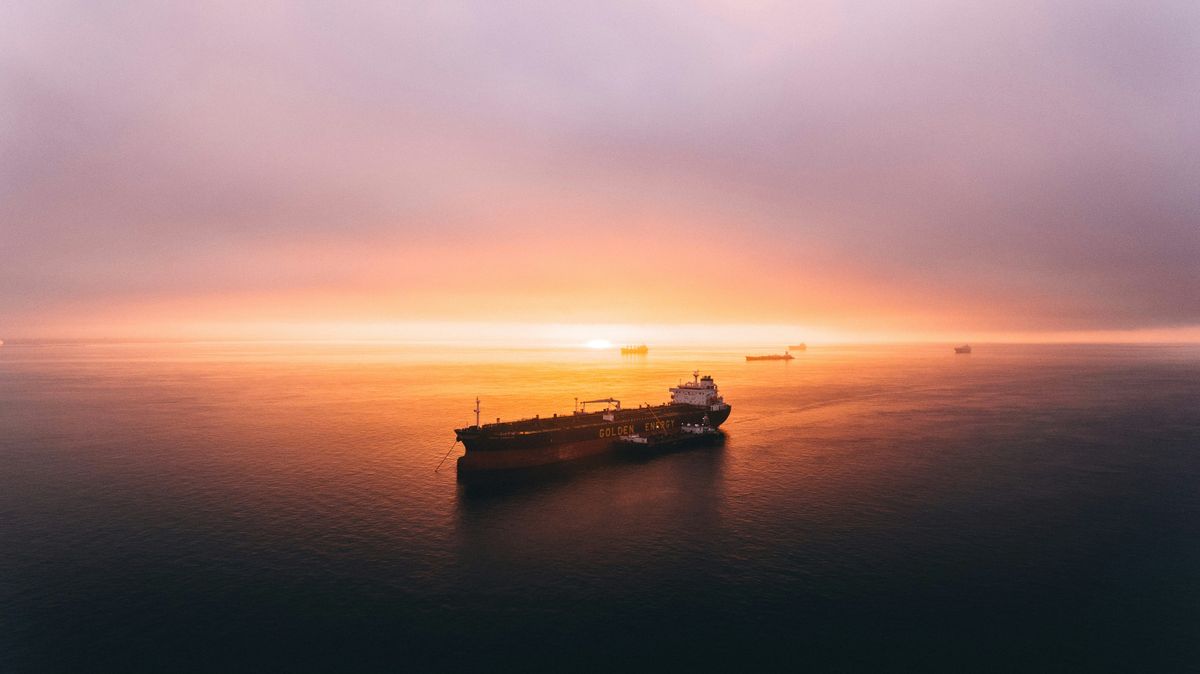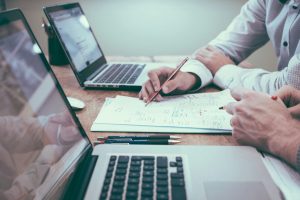Navigating the complexities of unpaid goods shipments in international trade, particularly between the USA and Japan, requires a structured and informed approach. This article delves into the systematic recovery process adopted by companies to handle such scenarios, focusing on the three-phase recovery system that aims to recoup company funds efficiently. From initial recovery efforts to potential litigation, the article outlines the steps involved in reclaiming unpaid debts and the associated costs and outcomes of each phase.
Key Takeaways
- A three-phase recovery system is employed to manage unpaid goods shipments, starting with immediate recovery efforts and potentially escalating to legal action.
- Initial recovery efforts include sending demand letters, skip-tracing, and persistent contact attempts by collectors within the first 60 days post-account placement.
- Legal assistance is engaged if initial recovery fails, with local attorneys issuing demands and assessing the viability of further action, including litigation.
- Litigation is considered based on a thorough evaluation of the debtor’s assets and the likelihood of recovery, with upfront legal costs required from the creditor.
- Collection rates and fees vary based on claim volume, age, and whether the account requires legal action, with no-cost closure options for non-recoverable cases.
Initial Recovery Efforts for Unpaid Goods
Immediate Actions Post-Account Placement
Upon account placement, swift action is crucial. Within the first 24 hours, a multi-pronged approach is initiated:
- A series of four letters dispatched via US Mail to the debtor.
- Comprehensive skip-tracing and investigation to secure optimal financial and contact data.
- Daily attempts to engage the debtor through various communication channels, including phone, email, and fax.
Expect persistent efforts by our collectors, with daily contact attempts spanning the first 30 to 60 days. This aggressive pursuit is the cornerstone of our initial recovery phase.
Should these efforts not yield results, the process seamlessly transitions to Phase Two, involving legal intervention. Our affiliated attorneys, located within the debtor’s jurisdiction, are ready to escalate the matter, ensuring no momentum is lost.
Skip-Tracing and Investigative Measures
Once the initial demand letters are dispatched, the focus shifts to skip-tracing and investigative measures. Debtors are meticulously tracked to uncover current financial and contact information. This phase is critical for establishing a solid foundation for recovery efforts.
- Comprehensive data gathering is initiated to ensure all debtor information is accurate and up-to-date.
- Advanced search techniques are employed to locate debtors who may be evading payment.
- Information obtained is used to strategize the most effective approach for debt recovery.
Persistence in these investigative efforts is key to maximizing the chances of successful debt recovery.
The costs associated with these efforts are a necessary investment in the recovery process. With competitive collection rates, such as those offered by DCI, the financial burden is mitigated. It’s a structured approach that balances the potential for recovery against the expenses incurred.
Persistent Contact Attempts by Collectors
In the realm of USA-Japan trade, collectors play a crucial role in the structured approach to debt recovery. Daily attempts to reach out to debtors are made through various channels, including phone calls, emails, and text messages. This aggressive strategy is maintained for the first 30 to 60 days post-account placement.
Persistence is key; however, if these efforts yield no resolution, the case escalates to Phase Two, involving legal intervention. Here’s a snapshot of the initial recovery system:
- Phase One: Daily contact attempts, skip-tracing, and investigative actions.
- Phase Two: Legal letters and calls from local attorneys.
- Phase Three: Decision on litigation or case closure.
The goal is to achieve payment collection before reaching the need for legal action. If persistent contact fails, the structured recovery system ensures a seamless transition to the next phase.
Engaging Legal Assistance in Debt Recovery
Transition to Local Attorney Involvement
Upon forwarding a case to a local attorney, immediate and decisive actions are taken. The attorney drafts a series of demand letters on their law firm letterhead, signaling a shift in the recovery process. These letters are coupled with persistent attempts to contact the debtor through calls, reinforcing the urgency of the situation.
Local attorneys play a pivotal role in the debt recovery process. They assess the debtor’s ability to pay, navigate the complex legal landscape, and manage potential litigation. This involvement is a game-changer in the cost-benefit analysis of pursuing unpaid goods.
The involvement of a local attorney often marks a turning point in the recovery efforts, bringing a new level of legal pressure to bear on the debtor.
Should these efforts remain fruitless, a detailed assessment is provided, outlining the challenges and recommending the next steps—be it continued attempts at resolution or proceeding to litigation.
Attorney-Led Communication and Demands
Once a local attorney takes the helm, the tone of the debt recovery process shifts. The attorney’s letterhead adds weight to the demands, signaling a serious escalation. The debtor is now faced with persuasive legal communication, designed to elicit prompt payment.
- Initial attorney correspondence is dispatched swiftly.
- Follow-up includes a mix of calls and letters.
- Negotiation and settlement efforts intensify.
The goal is clear: resolve the debt before litigation becomes necessary.
Should these efforts not yield results, the attorney provides a candid assessment. This paves the way for an informed decision on whether to litigate or close the case.
Assessment and Recommendations for Continued Action
Upon completing the investigative phase, our firm provides a decisive recommendation. If the likelihood of debt recovery is low, we advise case closure, incurring no fees. Conversely, should litigation seem viable, a critical decision awaits you.
- Option 1: Discontinue legal pursuit, withdraw the claim, and owe nothing.
- Option 2: Persist with standard collection efforts.
- Option 3: Advance to litigation, accepting upfront legal costs.
The choice is pivotal, balancing the potential for recovery against the financial commitment required.
Should litigation commence, initial fees range from $600 to $700, based on the debtor’s location. These cover court costs and filing fees, essential for legal action. In the event of unsuccessful litigation, the case concludes without further charges.
Our rate structures are competitive, reflecting claim volume and age. For instance, for 1-9 claims, rates vary from 30% to 50% of the amount collected, depending on the claim’s age and value. Legal action incurs a 50% rate. Making an informed decision is crucial, considering the impact on resources and the ongoing trade relations between the USA and Japan.
Deciding on Litigation for Unresolved Debts
Evaluating the Viability of Legal Action
Before proceeding with litigation, a critical assessment of the debtor’s financial status and the costs involved is essential. The decision to litigate hinges on a balance between potential recovery and expenses incurred.
Recovery is not always guaranteed, and the specifics of the claim heavily influence collection rates. Here’s a simplified breakdown of potential upfront legal costs:
- Court costs and filing fees: $600 – $700
- Attorney fees: Variable based on claim age and volume
Deciding to litigate is a significant step. It requires careful consideration of the debtor’s assets, the likelihood of successful recovery, and the readiness to cover initial legal expenses.
If litigation is deemed unviable, alternative actions such as standard collection efforts can continue. However, if the case progresses to court, upfront costs must be met, with the understanding that unsuccessful litigation leads to case closure without additional fees.
Understanding the Costs and Process of Litigation
When a trade deal goes awry, and unpaid goods loom over international relations, litigation might seem like the next logical step. Costs can escalate quickly in legal battles, with upfront fees for court costs and filing often ranging from $600 to $700. These are just the tip of the iceberg.
Litigation is a complex dance of documents, deadlines, and legal maneuvers. Clients shoulder significant responsibilities, including decision making on litigation, managing payment obligations, and influencing the debt recovery process through timely actions.
The decision to litigate is not to be taken lightly. It’s a strategic move that requires careful consideration of potential returns versus the financial and time investments involved.
Here’s a snapshot of potential costs:
| Stage | Cost |
|---|---|
| Filing Fees | $600 – $700 |
| Attorney Fees | Variable |
| Court Costs | Included in Filing Fees |
Remember, these costs do not guarantee success. If litigation fails, the case closes, and you owe nothing further, but the unpaid debt remains unresolved.
Outcomes and Financial Implications of Unsuccessful Litigation
When litigation fails to yield recovery, the financial impact can be significant. Costs incurred during the legal process are often non-recoverable, leaving businesses to absorb these expenses. The decision to litigate should be made with a clear understanding of the potential for loss.
Recovery likelihood is a critical factor in deciding whether to pursue legal action. A thorough assessment of the debtor’s assets and the feasibility of collection is essential before proceeding. If the probability of recovery is low, alternative strategies may be more cost-effective.
The choice to litigate is a gamble with both monetary and time investments at stake.
Here’s a breakdown of typical upfront legal costs:
| Jurisdiction | Filing Fees | Court Costs |
|---|---|---|
| USA | $600 – $700 | Varies |
| Japan | Varies | Varies |
Should litigation not result in payment, the case is closed with no additional fees from the firm or affiliated attorney. This outcome underscores the importance of a strategic approach to debt recovery within the USA-Japan trade context.
Understanding Collection Rates and Fees
Rate Structures Based on Claim Volume and Age
Collection rates are not one-size-fits-all. They are carefully calibrated to reflect the age and volume of claims. The younger the debt, the lower the fee—a principle that incentivizes swift action. For instance, claims under a year old may incur a 30% fee, while older accounts could see up to 40%.
Volume discounts are also in play. Submitting a higher number of claims can lead to more favorable rates. Here’s a quick breakdown:
- 1-9 claims: 30% to 50% fee
- 10+ claims: 27% to 35% fee
These rates are designed to balance the recovery potential against the cost of collection efforts. Tailored strategies for unpaid bills in different sectors ensure cost-effectiveness and higher recovery rates.
Remember, the goal is to maximize recovery while minimizing costs. The right strategy can make all the difference.
Additional Costs for Accounts Requiring Legal Action
When a trade deal between a US and Japanese company results in unpaid goods, and all initial recovery efforts fail, legal action may be the next step. This phase involves upfront costs, which are critical for initiating litigation. These costs cover court fees, filing fees, and other related expenses, typically ranging from $600 to $700.
Deciding to litigate is a significant step, requiring careful consideration of the financial implications and the likelihood of debt recovery.
It’s essential to understand that engaging in litigation is not just about the potential to recover the debt; it’s also about risk mitigation and maintaining professional relationships. Here’s a breakdown of the additional costs you might encounter:
- Court costs and filing fees: $600 – $700
- Attorney fees: Variable, often contingent on debt recovery
- Additional expenses: May include investigative services, travel, or expert witness fees
Remember, if litigation does not result in debt recovery, the case will be closed, and you will owe nothing further to the firm or the affiliated attorney.
No-Cost Closure for Non-recoverable Cases
When exhaustive efforts yield no promise of recovery, a pragmatic decision is made: close the case at no cost. This step is taken after a meticulous assessment of the debtor’s assets and the likelihood of recovery. If the potential for recouping the unpaid goods is deemed too low, closure is the fiscally responsible choice.
Legal action costs upfront can range from $600-$700—a significant investment. Businesses must weigh the financial viability of pursuing litigation against the backdrop of these expenses. When the balance tilts unfavorably, it’s time to cut losses.
Skilled collection agencies play a pivotal role in mitigating risks associated with non-payment. They protect cash flow and business operations by identifying when to cease recovery attempts.
Deciding to close a case is not an admission of defeat, but a strategic move to preserve resources.
The table below outlines the fee structure for various scenarios:
| Claims Volume | Account Age | Collection Rate |
|---|---|---|
| 1-9 claims | Under 1 yr | 30% |
| 1-9 claims | Over 1 yr | 40% |
| 1-9 claims | Under $1000 | 50% |
| 10+ claims | Under 1 yr | 27% |
| 10+ claims | Over 1 yr | 35% |
| Any volume | With attorney | 50% |
Navigating the complexities of debt collection can be challenging, but with Debt Collectors International, you can ensure that your collection rates and fees are both competitive and fair. Our expert team is ready to provide you with tailored solutions that fit your industry’s unique needs. Don’t let unpaid debts disrupt your cash flow. Visit our website to learn more about our services and take the first step towards improving your collections process. Act now and experience the difference with Debt Collectors International.
Frequently Asked Questions
What immediate actions are taken once an account is placed for recovery?
Within 24 hours of placing an account, a series of four letters are initiated, the debtor is skip-traced and investigated, and our collectors begin persistent contact attempts through various communication methods. This intensive contact period typically lasts for the first 30 to 60 days.
What happens if initial recovery efforts fail?
If the initial recovery efforts are unsuccessful, we transition to Phase Two, which involves forwarding the case to one of our affiliated attorneys within the debtor’s jurisdiction for further action, including attorney-led communication and demands.
How is the decision made to proceed with litigation?
The decision to proceed with litigation is made after a thorough investigation of the facts and the debtor’s assets. If the likelihood of recovery is low, we may recommend closure of the case. If there is a reasonable chance of recovery through legal action, we will present you with the option to litigate.
What are the costs associated with pursuing legal action?
If you decide to proceed with legal action, you will need to cover upfront legal costs such as court costs and filing fees, which typically range from $600 to $700. These costs are necessary for our affiliated attorney to file a lawsuit on your behalf.
What are the collection rates for unpaid goods shipments?
Collection rates vary based on the number of claims, age of the accounts, and whether the account has been placed with an attorney. Rates range from 27% to 50% of the amount collected, with specific percentages depending on these factors.
What happens if the litigation process is unsuccessful?
If attempts to collect via litigation fail, the case will be closed, and you will owe nothing to our firm or our affiliated attorney for these results. You may choose to continue standard collection activity or withdraw the claim.





